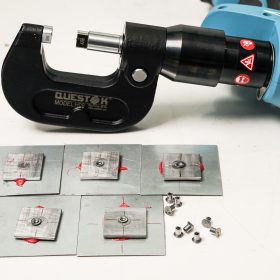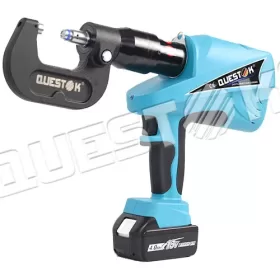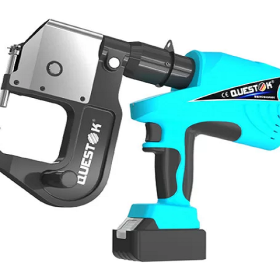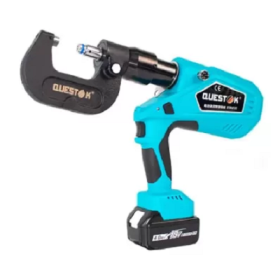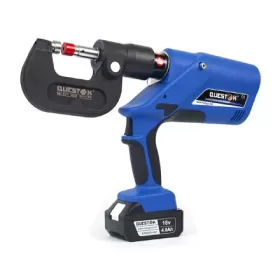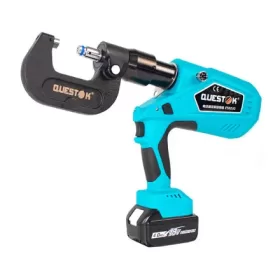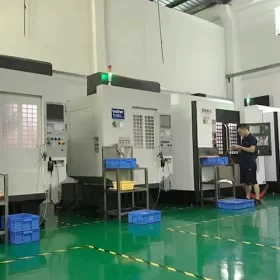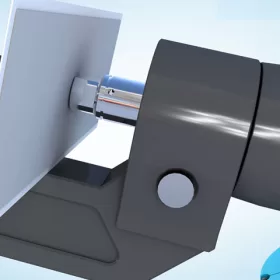Quality Assurance and Standards in Solid Aluminum Rivet Manufacturing
Introduction
Solid aluminum rivets play a crucial role in various industrial applications, including aircraft, automobiles, and construction. Their reliability and performance depend heavily on stringent quality assurance and adherence to industry standards. This article explores the multifaceted aspects of quality assurance and standards in the manufacturing of solid aluminum rivets, providing insights into the measures taken to ensure their integrity and meet specific requirements.
Material Properties and Specifications
Aluminum Alloy Selection
The properties of the aluminum alloy used for rivets are crucial for their strength, corrosion resistance, and durability. Common alloys used include 2024-T3, 5052-H32, and 6061-T6, each meeting specific industry specifications.
Mechanical Properties
Strict adherence to mechanical property specifications is essential to ensure the performance of solid aluminum rivets. These specifications include tensile strength, yield strength, and elongation, which determine the rivet’s load-bearing capacity, resistance to deformation, and flexibility.
Surface Finish and Coating
The surface finish of aluminum rivets affects their corrosion resistance and appearance. Quality assurance measures include polishing, anodizing, or plating to enhance surface integrity and meet aesthetic requirements.
Manufacturing Process Control
Extrusion and Cold Heading
Quality assurance in rivet manufacturing begins with the extrusion process, which produces the rivet blanks. Precise temperature control, die design, and lubrication ensure optimal mechanical properties and dimensional accuracy. Subsequent cold heading involves forming the head and tail of the rivets using cold forging techniques.
Heat Treatment
Proper heat treatment is critical for achieving desired mechanical properties and enhancing corrosion resistance. Controlled heating and cooling cycles ensure consistent grain structure and eliminate residual stresses, resulting in a strong and durable rivet.
Inspection and Testing
Rigorous inspection and testing procedures are implemented throughout the manufacturing process. Visual inspections, dimensional checks, and destructive testing such as tensile and shear tests verify the rivets’ conformance to specifications.
Industry Standards and Certifications
Aerospace Industry Standards
Solid aluminum rivets for aerospace applications must comply with stringent standards such as AS9100 and NADCAP (National Aerospace and Defense Contractors Accreditation Program). These standards establish quality management systems, material specifications, and inspection criteria to ensure the highest levels of performance and safety.
Construction Industry Standards
In the construction industry, aluminum rivets must meet standards such as ASTM B316 and AWS D1.1. These standards address material requirements, mechanical properties, and installation guidelines, ensuring the structural integrity and longevity of riveted connections.
Quality Certifications
Obtaining quality certifications, such as ISO 9001 and AS9100, demonstrates a manufacturer’s commitment to continuous improvement, customer satisfaction, and regulatory compliance. Certifications provide assurance that the manufacturing process adheres to international quality standards.
Conclusion
Quality assurance and standards are vital to the production of reliable and high-performing solid aluminum rivets. Through meticulous material selection, controlled manufacturing processes, rigorous inspection, and adherence to industry standards, manufacturers ensure the integrity and safety of these essential components in various industries. By meeting stringent specifications and obtaining quality certifications, manufacturers demonstrate their commitment to delivering products that meet the demands of their customers and ensure the reliability of the structures and systems they connect.
- Company News
- Industry News
- Tag
- Tags
-
The Advantages of Questok Rivet Guns: Precision, Efficiency, and Durability
In industrial fastening applications, the choice of tools directly impacts productivity, safety, and long-term cost-effectiveness. Questok rivet guns have emerged as a standout solution for professionals across aerospace, automotive, and construction sectors. Combining advanced engineering with user-centric design, these tools deliver unmatched performance. Below are the key advantages that make Questok rivet guns a preferred choice:
-
Rivet Gun FAQ
Rivet Gun FAQ-SPR
-
Fast Assembly and Repair With Cordless Solid Rivet Gun
Questok cordless solid rivet gun stands out as a pivotal innovation, merging portability with power to facilitate efficient and effective fastening in a myriad of applications.
-
Redifine The Role of Self-piercing Riveting Gun Machine
Self-piercing riveting adopts high-speed mechanical fastening skill that joins thin sheet materials, typically steel and aluminum alloys.
-
The Latest Innovations in Clinching Tool Design
Explore the latest innovations in clinching tool design, redefining precision, efficiency, and versatility in material joining.
-
The Application and Maintenance of Self-Piercing Rivet Guns
Delve into the applications of self-piercing rivet guns in the automotive and aerospace industries and reveal the essential maintenance practices that ensure their accuracy and efficiency.
-
Rivetless Riveting Gun for Ventilation Duct Projects
The ventilation duct rivetless gun is a tool for riveting ventilation ducts without rivets.
-
Guide to Using Self-Piercing SPR Riveting Gun
In the automotive industry, self-piercing SPR (Self-Piercing Rivet) riveting guns are commonly used for joining metal components in vehicle bodies, including BMW vehicles.
-
Rivet Gun FAQ
Rivet Gun FAQ-SPR
-
Versatile Fastening- Applications of the Handheld Rivet Gun Across Industries
In the realm of fastening, the handheld rivet gun stands as a testament to ingenuity and versatility. Its ability to effortlessly join materials with sheer strength and permanence has revolutionized manufacturing and construction processes, leaving an enduring mark on diverse industries. Aerospace: Where precision and reliability are paramount, the rivet gun shines. In aircraft assembly, […]
-
Time-Saving Tools- Speeding Up Projects with Electric Blind Rivet Guns
In the whirlwind of project deadlines, every minute counts. But what if there was a tool that could dramatically reduce assembly time, giving you an edge in the race against the clock? Enter the electric blind rivet gun: your secret weapon for lightning-fast and effortless riveting. Electric blind rivet guns are the ultimate time-savers for […]
-
Streamlining Fastening- How an Electric Blind Rivet Gun Enhances Efficiency
Introduction In the realm of manufacturing and assembly, fastening plays a crucial role in securing components and ensuring structural integrity. Traditional manual rivet guns, while reliable, are often time-consuming and labor-intensive. The advent of electric blind rivet guns has revolutionized the fastening process, significantly enhancing efficiency and productivity. This article delves into the benefits of […]
-
The Role of Automation in Electric Rivetless Clinching
Electric rivetless clinching (ERC) is a lightweight joining process that eliminates the need for rivets or other fasteners. This can lead to significant cost savings and increased production efficiency. Automation plays a critical role in ERC, enabling high-speed and high-volume production. Automated Feed Systems Automated feed systems are used to accurately position the two workpieces […]
-
Why Choose a Universal Self-Piercing Riveting Gun for Your Projects?
In the realm of construction and fabrication, riveting guns stand as indispensable tools for creating secure and robust connections. Among the various types available, universal self-piercing riveting (SPR) guns have emerged as a game-changer due to their versatility and efficiency. This article will delve into the compelling reasons why choosing a universal self-piercing riveting gun […]
-
Why Choose Stainless Steel Hollow Rivets for Your Projects?
In the world of industrial manufacturing, choosing the right fasteners for your projects is crucial for ensuring longevity and reliability. Among the many options available, stainless steel hollow rivets stand out as a superior choice for a wide range of applications. This article delves into the compelling reasons why stainless steel hollow rivets are the […]
-
Top Trends in Electric Rivetless Clinching Guns
In the realm of fastening technology, electric rivetless clinching guns have emerged as a revolutionary solution for a wide range of industrial applications. These advanced tools offer several преимущества and capabilities, revolutionizing the way businesses approach their fastening needs. Adoption of Brushless Motors Brushless motors have gained significant traction in electric rivetless clinching guns due […]
